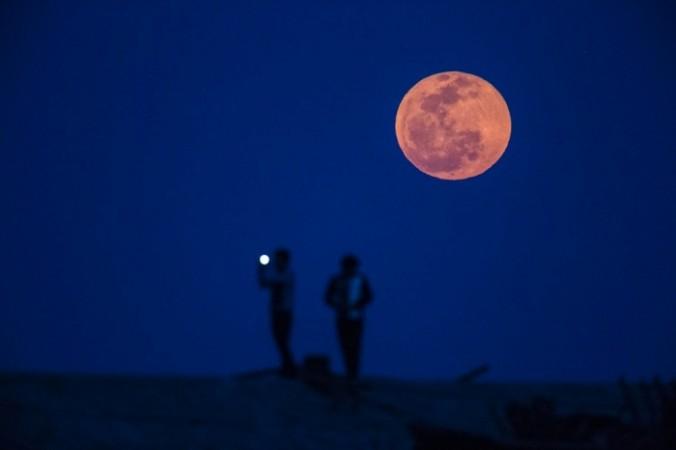
For sky-gazers and astronomy fans, Wednesday will be a special day as they will be able to watch the blood moon rising.
The blood moon on 8 October 2014 will be much bigger and better than the one seen in April.
But unfortunately, not everyone across the world will get to see the near impossible natural wonder, when during the selenelion or horizontal eclipse both the sun and the moon will be visible on both horizons for one brief moment.
As per the details released by NASA, the entire event will be visible from both North and South America.
Observers in the western Pacific will miss the first half of the eclipse as it will occur before moonrise. Likewise most of Europe and Africa experience moonset just as the eclipse begins.
While sky-gazers in Hawaii, Australia, and much of the Pacific region, including Japan will get a chance to see the entire eclipse, it won't be visible from north or east Europe, eastern Africa, the Middle East or Central Asia.
However, if you cannot see the eclipse from your own yard, you can watch it live online. There are several live web streaming sites, where anyone can watch the entire total lunar eclipse live.
The Slooh Community Observatory and NASA will telecast live web streaming of the total lunar eclipse set to occur on Wednesday.
The 4-hour-long Slooh webcast will start at 5 a.m. EDT (0900 GMT), and a NASA webcast begins at 3 a.m. EDT (0700 GMT). A Virtual Telescope Project webcast will start at 6 a.m. EDT (1000 GMT). The Griffith Observatory will be also be streaming the event live from the Zeiss dome starting 4.15 a.m. EDT (0815 GMT).
According to Timeanddate, North Carolina will have the best view of the Blood Moon.
Americans in the western half of the United States will get to see the most of the Blood Moon for about an hour on 8 October, Wednesday.
"The most unique thing about the 2014-2015 tetrad is that all of them are visible for all or parts of the U.S.A.," Fred Espenak, a NASA eclipse expert told CNN.
The CNN report also noted that the second blood moon this time will be 'bigger,' than the one seen on 15 April.
If you miss this second blood moon rising, you will have to wait until 4 April 2015 for the third of the Lunar eclipse and the last of it will take place on 28 September 2015.
Watch Video: Blood Moon Total Lunar Eclipse 15 April, 2014













